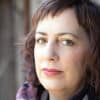Orbis author looks at unaffiliated believers and how they understand mission
Meredith, who is in her early 20s and was raised a Southern Baptist, finds herself at a crossroads. She no longer believes in the Baptist theology she grew up with, but says she is “searching.” Like many other people in their 20s, Meredith recognizes the tectonic shift happening in American religious practice.
“Young people are moving away from labels, and deciding how we group ourselves religiously,” she says. Meredith isn’t part of any Christian denomination at the moment, and describes herself as a “none”—a person with no particular religious practice.
“Nones” like Meredith, who answer “no religion” or “nothing in particular” in surveys, are for the most part neither atheist nor agnostic. Nearly 60 percent of them are either “fairly certain” or “absolutely certain” that God exists, yet almost the same percentage believe that belonging to an organized religion is “not at all important.”
Many nones say they pray daily, attend worship services at least occasionally, and, for the most part, state that religion provides a sense of community and an opportunity to do good work in society. So why do they choose not to belong to a religious community? Their reasons are as diverse and complex as the millions of individuals who would be called nones.
Some nones come from interfaith families, which make up a larger percentage of American marriages today than ever before, with four in 10 marriages today being between people of different religious backgrounds. Increasingly, parents in religiously mixed marriages are either allowing their children to decide for themselves which religion they will belong to or blending both of their religious traditions.
Carolyn, who is in her late 20s, typifies the in-between state of religiously mixed nones. Raised by a secular Jewish father and a Lutheran mother, Carolyn attended a Lutheran church during her childhood. She did volunteer service at church, but found the theology lacking.
“Nothing really pumped me up,” she says. After abandoning religion for most of her teenage years, she found herself searching for something after college. “I do and I don’t have an ideal church,” she says. “I also used to attend Shabbat services and that’s always struck me as interesting and compelling.” On the other hand, her Christian side exerts a strong pull. She still sings in choirs, and says, “I like traditional hymns. I like a traditional service. But, I’d like a more liberal theology.”

Kaya Oakes, (Photo courtesy K. Oakes/U.S.)
Another example of how nones defy categorization would be what some sociologists refer to as “religious switching.” This doesn’t necessarily mean conversion from one religion to another, but it can mean leaving one religion without joining another. Among former Catholics, for example, the majority say they cannot imagine rejoining the Church, but nearly 10 percent of ex-Catholics still describe themselves as “culturally Catholic,” with deep social and ritual ties to the religion.
Joan was raised Catholic, but when she became a teenager, her parents allowed her to choose whether she attended Mass. Of her attitude toward religion at that time, she says she was “not against it. I just didn’t care.”
After college and graduate school, Joan landed a job teaching at a Catholic high school. Although she was not a practicing Catholic at that point, seeing her students engaged in religious practice made her begin to reconsider Catholicism.
“I was growing toward something,” she says. “The wonderful thing is how much emphasis the school puts on volunteering and service. They really make sure the kids are aware of how that’s necessary not only to be a good Catholic, but a good human being, and the kids respond positively.” Slowly, Joan started to return to religious practice. Today, she says, “I’m making it a goal to merge my politics and beliefs. I feel strongly about this because it’s a conviction based on a love of humanity.”
In terms of missionary work, nones say overwhelmingly that caring for those on the margins is one of their greatest concerns.
Maria, who is Latina and was raised in a strongly Catholic family, went on a transformative service trip to Mexico as a teenager and today, in her late 30s, works as a labor organizer. Her religious upbringing and the Catholic emphasis on serving the poor has led her to a life of service to others, she says, and trying to broaden her perspective on the world around her.
“That’s how I practice my faith in my daily life in terms of the work that I do,” she says.
Maria no longer attends church. As a lesbian with a partner, she doesn’t feel comfortable going to her local church after hearing several homilies that she considered homophobic. However, she emphasizes that she still prays and feels deep connections to Catholicism. Her home, for example, is full of Mexican Catholic art, including images of the Virgin of Guadalupe. And her labor activism has led her to interfaith organizing around minimum wage issues. Working with faith leaders, she says, has shown her that “from a faith perspective the issue of workers being able to support their families and have a livable wage is a fundamental issue.”
For Catholic nones, the message of Pope Francis about caring for the marginalized resonates deeply whether they attend church or not. Because of their exposure to the idea of social justice being intrinsic to faith, Catholic nones instinctively tend to “run in the direction of the world’s brokenness,” as the writer D.L. Mayfield describes the desire to do missionary work. With so much brokenness in the world around us today, nones and practicing Christians alike may increasingly find ourselves running toward it.
Featured Image: Young people who reject organized religiion aren’t necessarily atheist, and many are seeking faith. (Anonymous: Public Domain)

